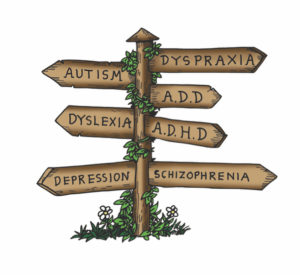 GAPS stands for Gut and Psychology Syndrome and Gut and Physiology Syndrome and was created by Dr Natasha Campbell-McBride in 2004. It is a gut healing protocol that aims to treat neurological and psychiatric conditions, such as autism spectrum disorders, ADD/ ADHD, schizophrenia, dyslexia, depression, obsessive-compulsive disorder and other neurological and psychiatric problems.
GAPS stands for Gut and Psychology Syndrome and Gut and Physiology Syndrome and was created by Dr Natasha Campbell-McBride in 2004. It is a gut healing protocol that aims to treat neurological and psychiatric conditions, such as autism spectrum disorders, ADD/ ADHD, schizophrenia, dyslexia, depression, obsessive-compulsive disorder and other neurological and psychiatric problems.
Because its main focus is on gut healing, it is also suitable for physiology disorders such as autoimmune disorders, IBS and Chrohn’s disease, Ulcerative Colitis, Celiac Disease, gastritis, food intolerances and migraines.
The GAPS diet is divided into three main parts:
The Introduction Diet, Full GAPS Diet and coming off the diet.
The GAPS diet is a wholefoods based diet consisting of mainly meats (including organ meats), fish, quality eggs, natural fats such as animal, butter, ghee, coconut and quality olive oils, non-starchy vegetables, nuts and seeds, fermented dairy, vegetables and fruits. Therefore avoiding all processed foods, grains, starchy vegetables and beans including soy, sugar and other commercial sweeteners, milk sugar (lactose) and all food additives.
The Introduction Diet, broken up into six stages, can take anywhere between three to eight weeks to complete or even up to one year, depending on your digestive issues and severity of symptoms. The Introduction Diet is a very restrictive diet and is designed to heal and seal the gut lining, and therefore a preferred starting place for those with severe neurological and digestive conditions. Meals consist mainly of meat and fish stocks, soups made from stock and vegetables, probiotics foods and fermented vegetables.
Once the patient has moved through all six stages of the Introduction Diet, they are ready to move onto Full GAPS. The Full GAPS Diet could also be starting point for those suffering from milder symptoms are those transitioning to a wholefoods diet from a poor, processed junk food diet. Once on the Full GAPS diet, this should be followed for approximately 1.5 to 2 years.
Once you feel that recovery has been achieved, it’s time to come off the GAPS diet, but this doesn’t mean going back to processed junk foods. Coming off the diet means reintroducing foods that you may have previously had sensitivities or allergies to, this is done slowly by adding a few ingredients such as white potato, quality grains such as buckwheat or quinoa, or a quality sourdough.
The GAPS diet may seem overly complex or leaving feeling unsure of where to start, this is where a Certified GAPS Practitioner can assist you with getting started and provide support and advice along the way, helping to manage any obstacles or symptoms on your journey to good health. Contact us today if you would like to learn more.
“GAPS™ and Gut and Psychology Syndrome™ are the trademark and copyright of Dr. Natasha Campbell-McBride. The right of Dr. Natasha Campbell-McBride to be identified as the author of this work has been asserted by her in accordance with the Copyright, Patent and Designs Act 1988”.


